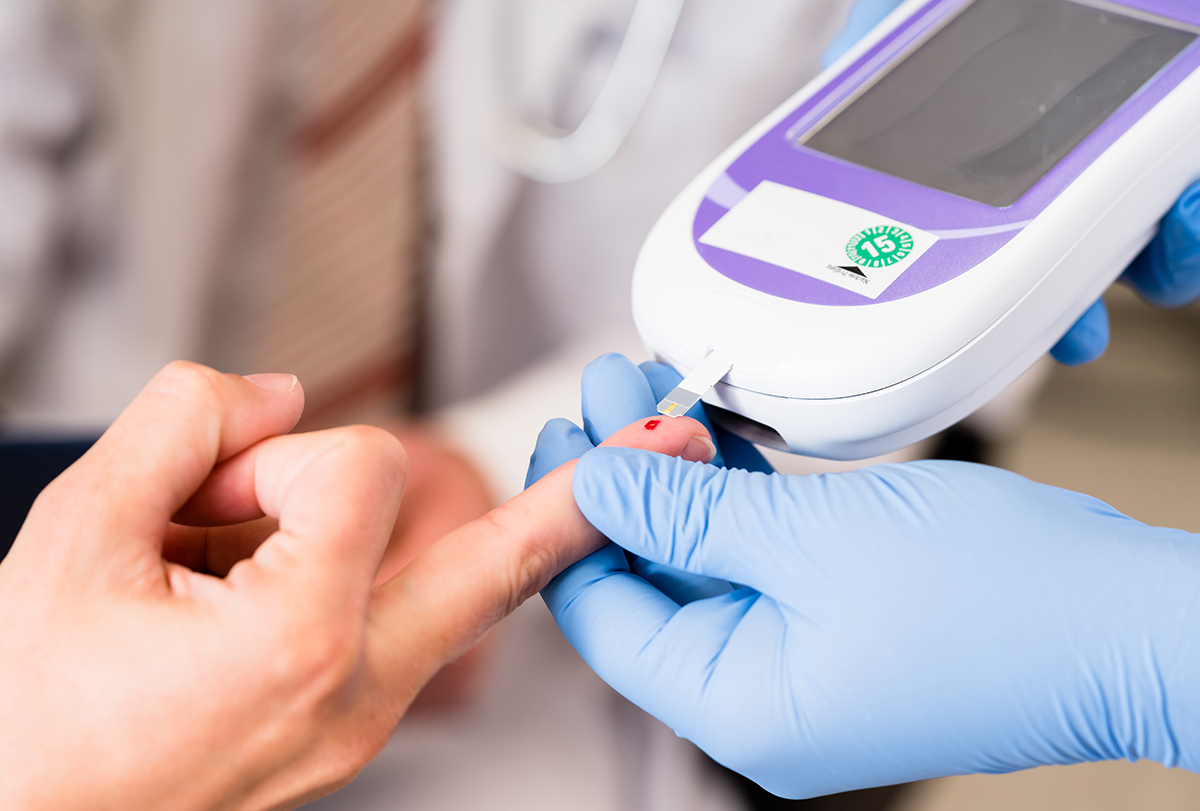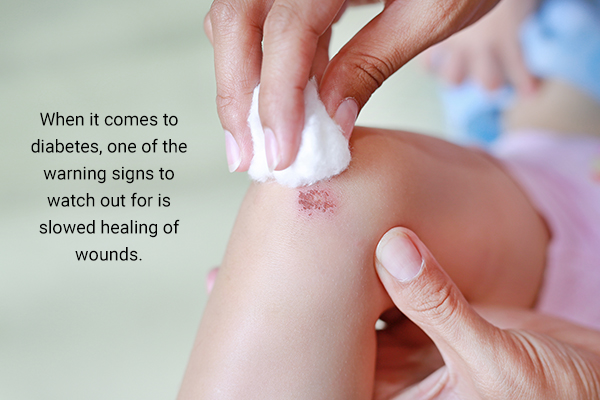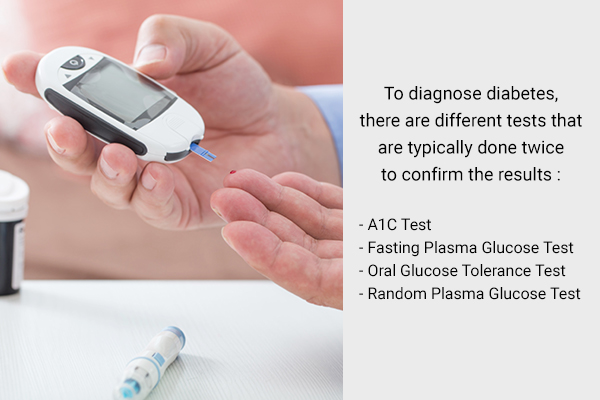In this article:
Diabetes is a chronic condition that affects millions of people worldwide. It’s important to be aware of its early warning signs as early detection and management can make a significant difference in your overall health.

This article will explore the early warning signs of diabetes that you should not ignore – from unusual symptoms to subtle hints.
Signs That You May Have Diabetes
Take note of the following signs and symptoms as they may point to diabetes.
1. Uncontrolled or excessive urination
Your bladder can actually give you a hint about diabetes before other symptoms show up.
Making more bathroom trips than usual, feeling a constant urge to urinate, or even experiencing moments of incontinence could be early warning signs of diabetic bladder dysfunction (DBD).
The high blood sugar levels associated with diabetes can put stress on your bladder and cause changes in its muscles and nerves. This can make your bladder act up and give you those troublesome symptoms. (1)
So, if you notice these bladder issues along with other diabetes risk factors such as a family history or being overweight, it’s time to talk to your doctor. They can run some tests and help you catch diabetes early so you can start managing it effectively.
2. Sudden weight loss or gain
Did you know that sudden changes in your weight could be early warning signs of diabetes? Weight fluctuations, whether gaining or losing weight rapidly, can be a signal that something is not right with your blood sugar levels.
It’s important to pay attention to unexpected weight changes regardless of your age. Your body might be trying to tell you that diabetes could be on the horizon. (2)
So, if you experience sudden weight changes, it’s a good idea to get checked by a healthcare professional to rule out any underlying issues such as diabetes.
3. Feeling thirsty all the time

Did you know that feeling thirsty all the time could be a sign of diabetes? It’s called polydipsia.
It’s normal to get thirsty from time to time, but if you find yourself chugging water or other drinks all day long and it still feels like your mouth’s as dry as a desert, it might be time to talk to your doctor. (3)(4)
4. Excessive waves of hunger
When you just can’t stop eating and you’re always hungry no matter how much you’ve already eaten, you may be experiencing polyphagia, which can be a warning sign of diabetes.
When your body doesn’t produce enough insulin or doesn’t use it properly, high blood sugar levels can result. These high levels can make you feel constantly hungry. (4)
So, if you find yourself eating more than usual and feeling hungry all the time, consult a healthcare professional to get it checked out.
5. Vision troubles
Changes in vision could be a warning sign of diabetes. Blurry vision may indicate that something’s up with your blood sugar levels.
High blood sugar levels can affect the blood vessels in your eyes over time. So, if you’re having trouble seeing clearly, schedule a checkup with a healthcare professional. Early detection and proper management of diabetes can help protect your vision and maintain the health of your eyes. (5)
6. Delay in the healing of wounds

One of the warning signs of diabetes to watch out for is slowed healing of wounds. In diabetes, cuts, scrapes, or other injuries take longer to heal than they normally would. This happens because diabetes can affect the body’s ability to heal itself properly. (6)
So, if you’re experiencing delayed healing of wounds, it’s important to consider the possibility of diabetes and consult with a healthcare professional.
7. Numbness in your digits
Numbness in your fingers and toes could be indicative of diabetes. High blood sugar levels can damage the nerves in your body, leading to a sensation of numbness or tingling in your digits.
Moreover, nerve damage can make it difficult to feel things properly, and you may notice a loss of sensation in your fingers and toes. It’s important to pay attention to these symptoms because they could indicate diabetes. (7)
8. Itching and dryness of the skin
Persistent itching on your skin may point to unmanaged blood sugar levels and diabetes.
Although the exact reason for the itching is not fully understood, a few factors are associated with it. One of them is dry skin, which is often more common in people with diabetes. Dry skin can make you more prone to itching. (8)
So, if you’re experiencing persistent itching or any other unusual symptoms, it’s always a good idea to consult with a healthcare professional to get the proper diagnosis and treatment.
Testing for and Diagnosing Diabetes

To diagnose diabetes, different tests are typically done twice to confirm the results. These tests are usually conducted in a doctor’s office or lab.
If the results of the first test show that your blood sugar levels are very high or you show symptoms of high blood sugar levels, a second test may not be necessary. (9)
Diagnostic tests include:
- A1C test – It measures average blood sugar levels over the past few months. This test doesn’t require any special preparation. (People with diabetes have an AIC level of 6.5% or more.)
- Fasting plasma glucose (FPG) test – It measures blood sugar levels after not eating or drinking anything (except water) for 8 hours. (People with diabetes have an FPG level of 126 mg/dL or more.)
- Oral glucose tolerance test (OGTT) – It checks your blood sugar levels before and after you drink a special sweet liquid to see how your body processes glucose. (People with diabetes have an OGTT level of 200 mg/dL or more.)
- Random plasma glucose (RPG) – It is used in cases where severe diabetes symptoms are present. (People with diabetes have an RPG level of 200 mg/dL or more.)
Note: If your blood sugar levels are higher than normal but not high enough to be considered diabetes, you may have prediabetes, which puts you at risk for developing type 2 diabetes. Results indicating prediabetes vary based on the test used.
Most-Asked Questions
Can stress affect blood sugar levels?
Yes, stress can impact blood sugar levels by triggering hormonal responses.
Can smoking be bad for blood sugar levels?
Yes, smoking can worsen diabetes.
Why is early detection important?
Early detection plays a crucial role in effectively managing and treating various health conditions such as diabetic retinopathy and diabetic nephropathy.
Diabetic retinopathy is a condition that affects the eyes and is the leading cause of adult blindness because high blood sugar levels can damage the blood vessels in the eyes. Detecting diabetic retinopathy in its early stages is crucial because it allows for timely intervention and treatment. (10)
Diabetic nephropathy happens when diabetes affects the blood vessels in the kidneys, leading to kidney damage and decreased kidney function. Regular monitoring of kidney function through urine tests and blood tests, such as checking for albumin levels, can help identify any signs of kidney damage. (11)
Final Word
Recognizing and addressing the early warning signs of diabetes can be crucial for the successful management of the condition. If you experience any of these warning signs, don’t ignore them. Consult a healthcare professional for a proper diagnosis and treatment.
- Was this article helpful?
- YES, THANKS!NOT REALLY


